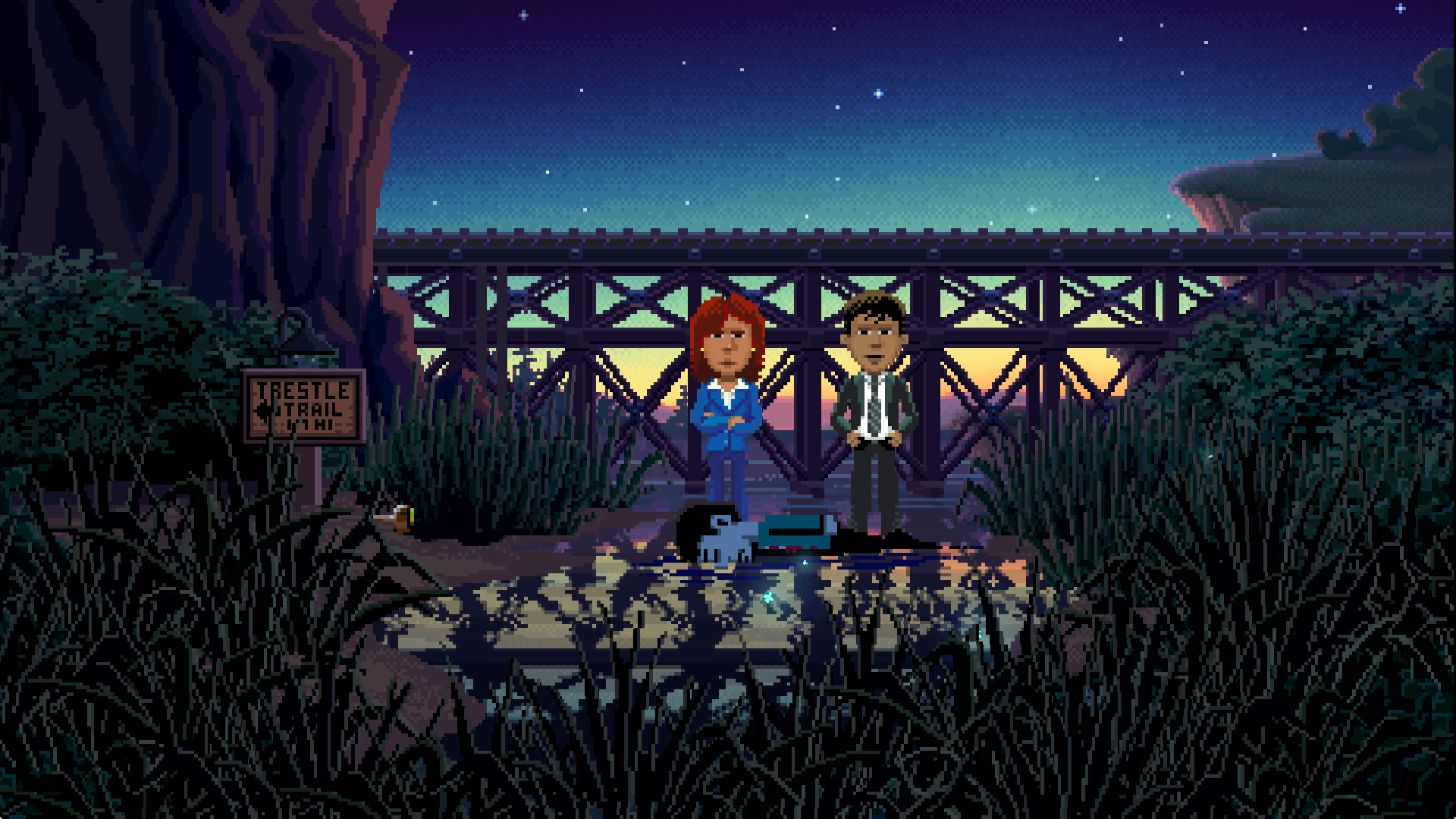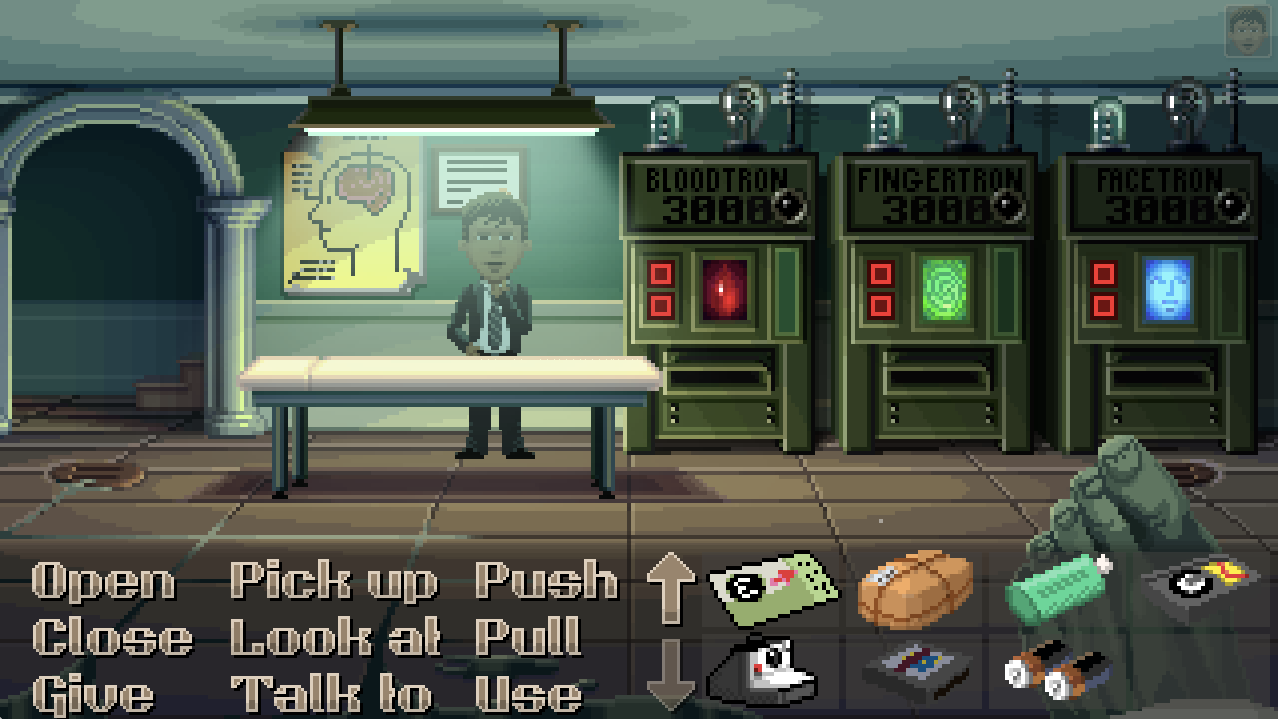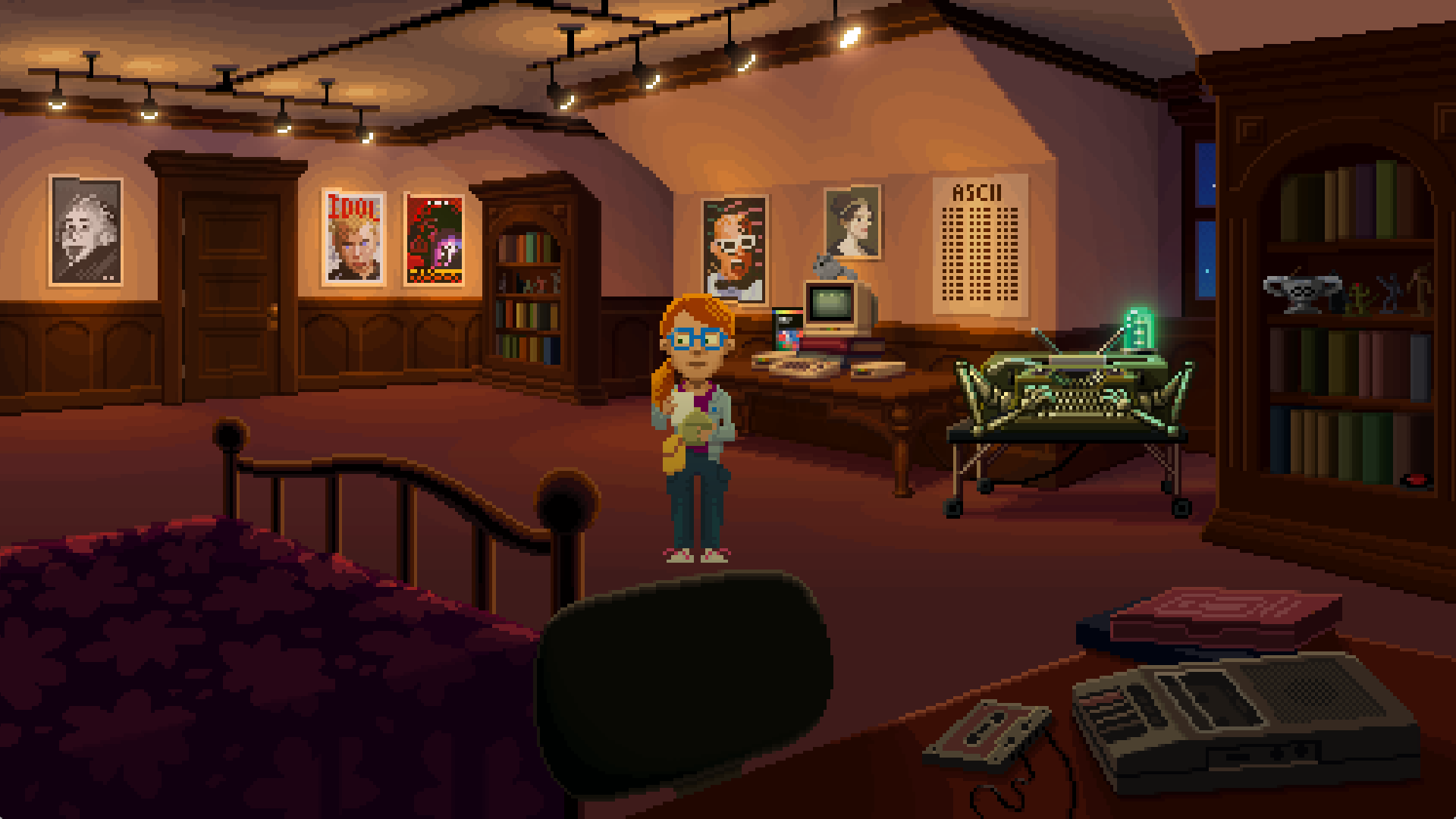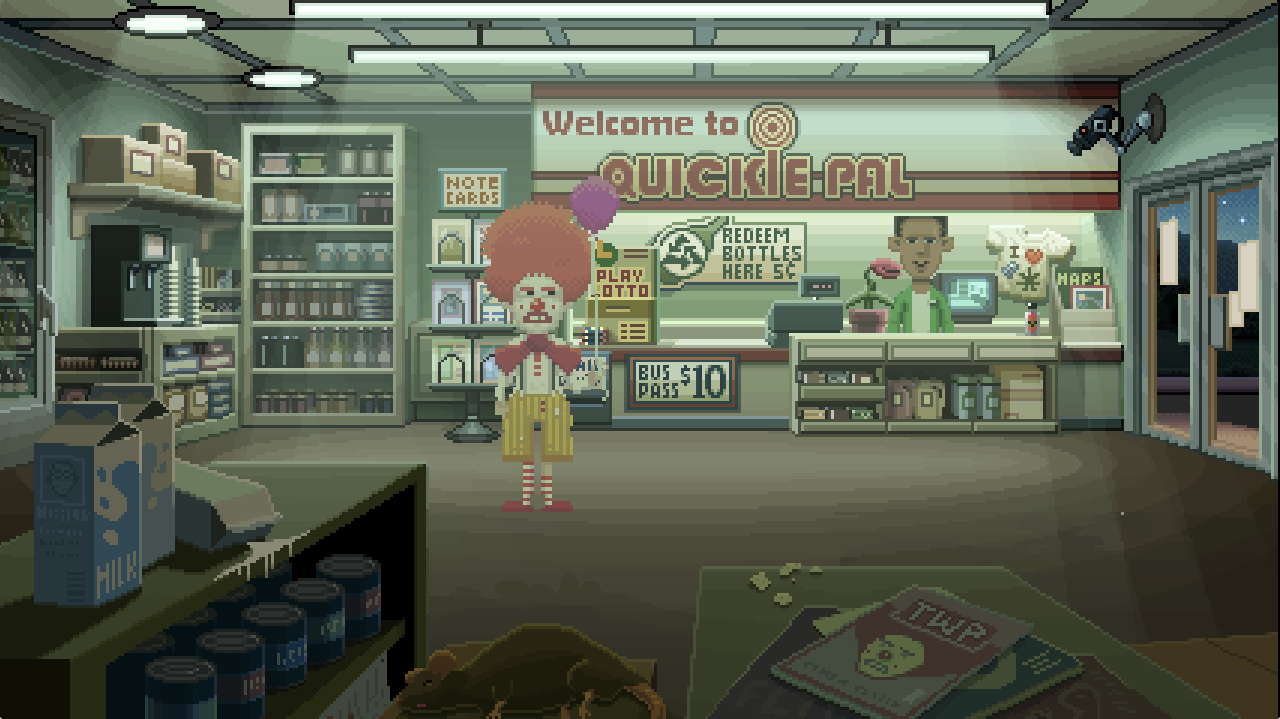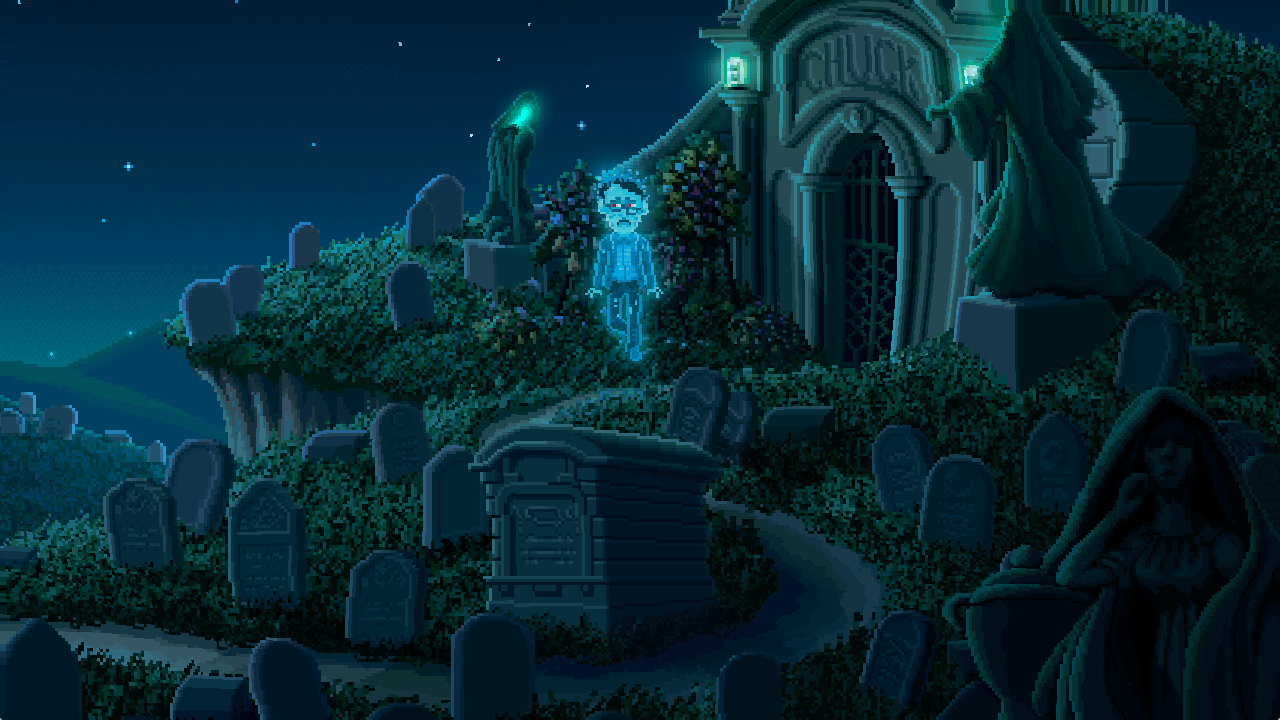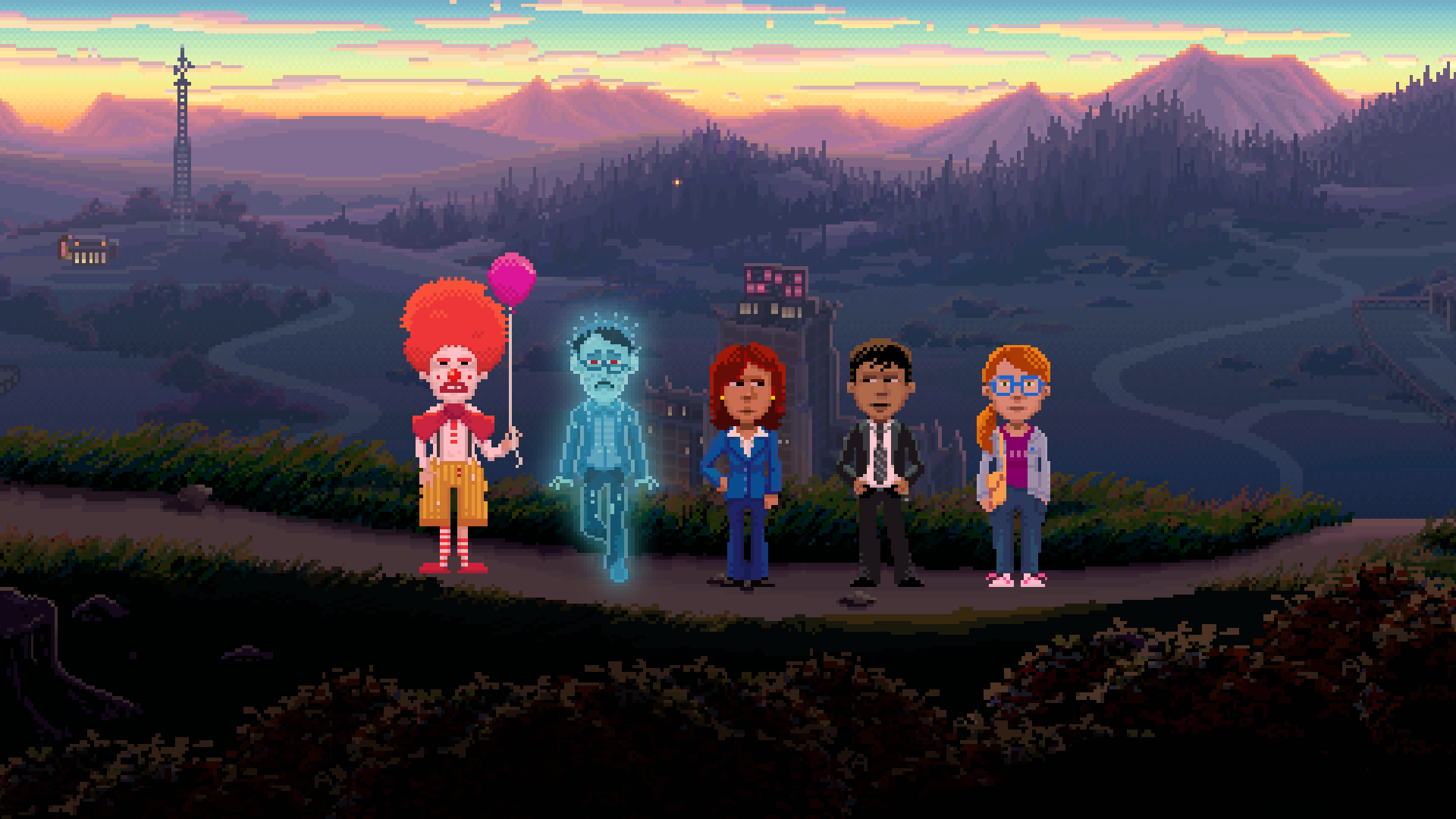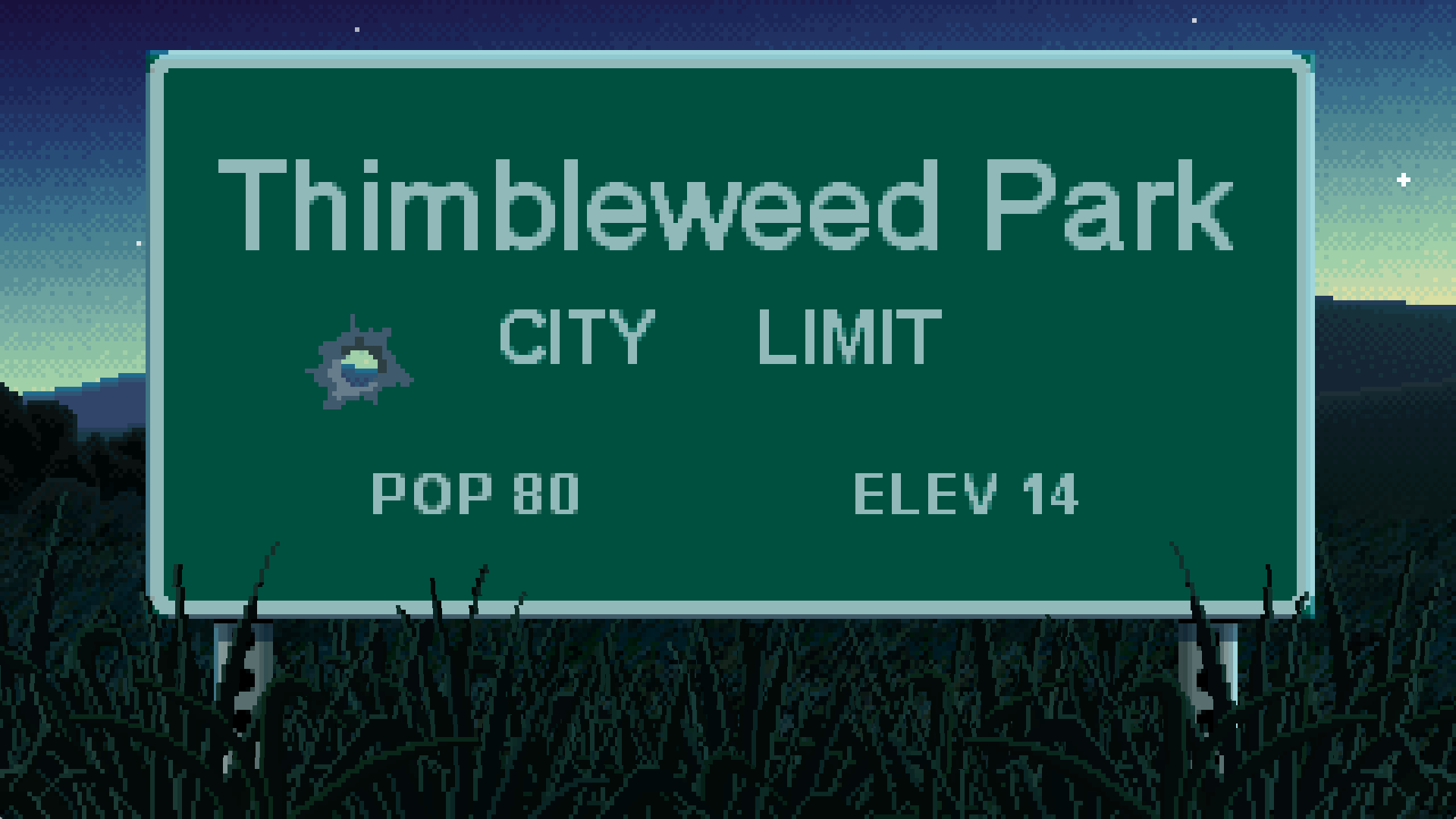When it comes to playing older titles, few have the sense of nostalgia like the point-and-click adventure. In recent years, remastered editions of titles like Grim Fandango, Day of the Tentacle, and more have allowed both old-time fans and a new generation to experience a genre that, by and large, holds a cherished place in the eyes of many, but also retains a style of gameplay that's only seen a resurgence in recent years.
Relying on the wits and ingenuity of players above anything else, adventure games have tended to straddle the line between being played with rose-tinted glasses and beholden to their past, whether it's through mechanics that seem outdated in today's climate of games, or through references and styles that went out of style decades ago. Of course, that begs the question: what if a LucasArts-style adventure game were made today?
[pullquote]"What if a LucasArts-style adventure game were made today?"[/pullquote]
That's the idea behind Thimbleweed Park, a 2D point-and-click adventure that should stand toe-to-toe with classics of the genre such as Maniac Mansion and The Secret of Monkey Island. Of course, that shouldn't come as too much of a surprise given that the game is developed by those titles' creator, Ron Gilbert, and LucasArts veteran Gary Winnick, which first started its life from a Kickstarter campaign in 2014.
At a first glance, Thimbleweed Park looks like it arrived here via a time machine from the late '80s to early '90s - however, underneath the hood lies a well-constructed, hilarious, and challenging adventure romp that's as much as a throwback to the genre as it is a chance to refine its harder edges.
Thimbleweed Park very much wears its admiration for old-school point-and-click adventure games on its sleeve, but not without making some changes that (largely) work in the game's favor toward making it accessible to a wider audience.
While Thimbleweed Park isn't necessarily the first to call back to the classic point-and-click adventures of old - such as the titles made in the past few years by Telltale Games and Double Fine Productions - its large, chunky pixel art and cast of quirky characters put it in a vastly-different era of game design, but with plenty of modern conventions and refinements being made.
[pullquote]"Thimbleweed Park very much wears its admiration for old-school point-and-click adventure games on its sleeve, but not without making some changes that (largely) work in the game's favor toward making it accessible to a wider audience."[/pullquote]
The biggest of these refinements that Thimbleweed Park makes is in providing an experience that's remarkably true to the adventure game formula, but in also providing one that's fairly accessible to players that may never have touched something like Maniac Mansion or The Secret of Monkey Island.
The most infamous problem with many adventure games of that era came from puzzles with incredibly obscure or subtle solutions, whether it was a random combination of items or a certain object in the environment that could easily be missed; a quality that still is apparent even in many of the classics.
Thimbleweed Park, for the most part, manages to avoid this thanks to a more forgiving method of interaction with the environment and with objects. With a big menu of verbs and actions at the bottom of the screen at all times -- including "Push," "Pull," "Talk to," and more -- Thimbleweed Park largely lays out what players can and can't do from the get go, and relies heavily on players' curiosity and logic to solve puzzles, talk to the town's citizens, and figure out where to go next.
Starting out as a pair of FBI agents, Agents Ray and Reyes, the cast of playable characters eventually extends to up to five different characters that players will have to switch between to get through specific situations, along with being mindful of what items each character has in their inventory and where that might be most useful.
[pullquote]"Thimbleweed Park largely lays out what players can and can't do from the get go, and relies heavily on players' curiosity and logic to solve puzzles, talk to the town's citizens, and figure out where to go next."[/pullquote]
While it is a far more forgiving experience than something like Grim Fandango or Day of the Tentacle -- games that I've still struggled to play even to this day -- Thimbleweed Park isn't necessarily free from the occasionally obscure or frustrating puzzles that adventure games have come to be known for. More than a few times, I ended up having to pixel hunt, retrace my steps, or do varying combinations of items in my character's inventory just to get a hint of what the next objective was. But, by and large, those moments are few and far between thanks to the ways that Thimbleweed Park manages to keep the player on track and continue on the case.
Characters will occasionally provide hints or clues in dialogue that can point you in the right direction of where to go next (even more frequently in Casual mode), and each character's inventory includes a handy "To-Do" list that makes it far easier to keep track of what the next objective is - without giving too much away or potentially spoiling a puzzle's solution. Likewise, if the player finds themselves hitting a dead-end with one character, it's easy enough to switch to one of the other playable characters that might (potentially) offer some help in figuring out where to go next or how to solve a certain puzzle.
[pullquote]"If the player finds themselves hitting a dead-end with one character, it's easy enough to switch to one of the other playable characters that might (potentially) offer some help in figuring out where to go next or how to solve a certain puzzle."[/pullquote]
This even goes as far as providing two separate ways of playing the entire game through either it's "Easy" and "Hard" modes. "Easy" mode does most of the heavy lifting for players by automatically highlighting what appropriate verb or action to take on a highlighted object, and also provides more frequent clues from player characters and NPCs in case you get stuck. Hard mode, meanwhile, takes that away and provides a more "authentic" point-and-click experience for veterans that may want more of a challenge from the experience.
While it's built on incredibly solid gameplay foundations that merge the old and new-schools of adventure game design, Thimbleweed Park shines brightest when it comes to its humor and characters. Even with just the briefest of introductions, Thimbleweed Park's cast brims with memorable faces that range from the quirky -- like the plumbing pair known as the Pigeon Brothers -- to the outrageous, like the laugh-out-loud funny and crotchety Ransome the *Beeping* Clown, who spits out hilarious insults to everyone like it's his day job (spoiler alert: it is).
With a fully voice-acted cast that each brings something unique and genuine, like the good-cop/bad-cop duo of Ray and Reyes, or the soft-spoken game developer-in-training Dolores, it would be hard to forget even the most obscure characters in Thimbleweed Park's large and memorable cast.
[pullquote]"It would be hard to forget even the most obscure characters in Thimbleweed Park's large and memorable cast."[/pullquote]
Beyond the hilarious cast of characters that players will take on or meet throughout the journey, Thimbleweed Park's sense of humor also carries it from a quirky adventure game, to a title that winks and nods at just how "old-school" it is thanks to some healthy doses of very meta humor.
From Agent Reyes' remark about the game's dead body beginning to "pixelate," to items in the environment labeled as "typical adventure game red herring bags," Thimbleweed Park is wonderfully funny and enjoyable as both a charming throwback to the titles it references, but also in its willingness to break the fourth wall a bit with players and throw in a laugh at its own expense. A long-winded conversation about the tropes of adventure games at its beginning should pretty clearly illustrate where this game (and its creators') minds were at while making it, and it's all the more enjoyable as a player.
Aside from the writing, the art and sounds of the game bring the characters and environments to life in a way that instantly evokes the era of '80s and '90s adventure games, but in a way that feels "modernly retro." Using pixel art and animations that call back to the games it evokes, the level of polish in the character models and environments is filled with detail and charm, from Ransome's whacked-out looks to the vibrant look of the town Thimbleweed Park itself, which is both striking in its own decaying, small-town way.
By the same note, the music changes effectively between its mysterious, Twin Peaks-like vibe of synths and piano when investigating the small town, to the bizarre and colorful like the abandoned circus that Ransome calls home.
[pullquote]"The art and sounds of the game bring the characters and environments to life in a way that instantly evokes the era of '80s and '90s adventure games, but in a way that feels 'modernly retro.'"[/pullquote]
While it will most likely appeal to veterans of the classics like Maniac Mansion, The Secret of Monkey Island, or the many other adventure games that came before it, Thimbleweed Park is, by its own right, nostalgia done right. Coming from esteemed designers like Gilbert and Winnick, it would have been easy to assume that Thimbleweed Park could have rested on nostalgia and being played with rose-tinted glasses.
Instead, Thimbleweed Park shows that adventure games very much have a place in 2017 as they did in the '80s and '90s thanks to its loving callbacks to the genre, but also its willingness to improve upon them in many ways. As the game's trailers have used the slogan that "a dead body is the least of your problems" in the game's dilapidated town, Thimbleweed Park hides many more secrets and ways of enjoying it beyond its murder-mystery plot, for those willing to look just a little bit deeper.

